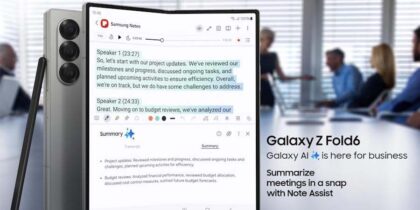In many banks and other large companies, workplace collaboration technology can be a source of frustration for some employees. This is especially the case if the IT department limits workers’ ability to use the newest generation of mobile-friendly tools for messaging and teamwork, which often help boost productivity. Many who work within a regulated industry are stuck with a limited set of corporate IT-approved tools, such as Microsoft SharePoint and Outlook. Email remains their primary communication and collaboration tool while also serving as their content management system. That can be a big problem.
According to statistics published by Atlassian, the average person receives 304 emails per week, checks an inbox about 36 times per hour and wastes $6,000 to $8,000 per year due to spam and reading unnecessary or poorly written communications. Researchers discovered that fielding email while working even resulted in a loss of up to 10 IQ points, or the same as missing an entire night’s sleep.
There is a better way to conduct business: Individuals are more effective when not wasting time on email. Beyond this, a 2015 study published in the Annals of Internal Medicine have shown that an excess of time spent sitting can be a health risk. Being able to work on the go using mobile devices such as tablets and smartphones offers a lot of potential benefits.
Unlike traditional tools for communication and collaboration, modern employee collaboration tools are designed to be mobile friendly and integrate with other applications, working as part of an overall communications ecosystem that fits your role and industry. SlackBox and Lua are powerful examples of workplace collaboration tools that are leaps and bounds ahead of traditional tools.
Centralized Communication With Slack
One way of improving your team’s communication is by using applications like Slack that put conversations in one place and make them instantly searchable. Unlike emails, messages are delivered via channels that anyone can subscribe to unless they’re set as private. You can see discussions that took place before you may have joined a team, which makes sense in companies that rapidly form and disband teams or need to share more than just email communications.
Additionally, Slack offers out-of-the-box integration with tools like Dropbox, GitHub, Google Hangouts and Zendesk. Video and other rich-media content are shared more easily. Benefits include being able to make faster decisions, with team members needing to switch applications less often. Users can switch seamlessly between their desktop applications and continue dialogue with their mobile devices, such as the Samsung Galaxy S® 6.
Effective Employee Collaboration With Box
Another modern collaboration tool is Box, offering workplace collaboration solutions for small and medium businesses to enterprise clients. Many large financial service companies and other regulated industries traditionally sought to keep all their data on premises using software in their data centers. Today, however, organizations with similar historic restrictions and need for privacy are embracing cloud services from Box to enable a more collaborative and mobile-centric workforce. The company recently debuted a new mobile app for Android™ that ensures the “best security, visibility and accessibility for critical business content stored on Box.” Aaron Levie, co-founder and chief executive officer of Box, observed that “today’s enterprises are faced with the challenge of helping employees be productive and work from anywhere.” Box can help accelerate business efforts to make employees more productive, offering on-the-go tools for their personal or corporate-liable mobile devices.
Global Coordination With Lua
Another tool that illustrates the potential for better collaboration is Lua, which offers mobile-centric solutions to help small teams connect and work together. Along with most industries today, the financial services industry is moving toward a more mobile, interoperable method of doing business. Many financial service companies have global operations, and both customers and employers that are trying to communicate worldwide. With improvements in mobile banking, customer satisfaction now demands more agile and responsive collaboration tools.
Lua securely solves mobile messaging problems while giving employees a great user experience and building team loyalty in a way that is compliant with Financial Industry Regulatory Authority requirements. Many financial institutions are aware of the benefits of creating mobile messaging solutions, but have compliance problems with their employees’ consumer messaging behavior. Lua’s mobile messaging helps financial service institutions by enhancing productivity and efficiency, while reducing operational costs. It also boasts an impressive communication analytics dashboard to improve operational intelligence.
With all these opportunities and new tools, it can be hard to know where to begin. A good start is to incorporate Samsung’s Digital Business offerings, which help the enterprise market move ahead by enabling collaboration with mobile-first, secure approaches. By leveraging Samsung KNOX‘s containerization capabilities, employees can run communication and workplace collaboration programs in a secure mobile environment, further safeguarding the enterprise’s valuable assets.








